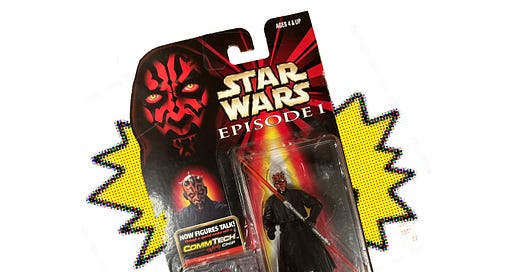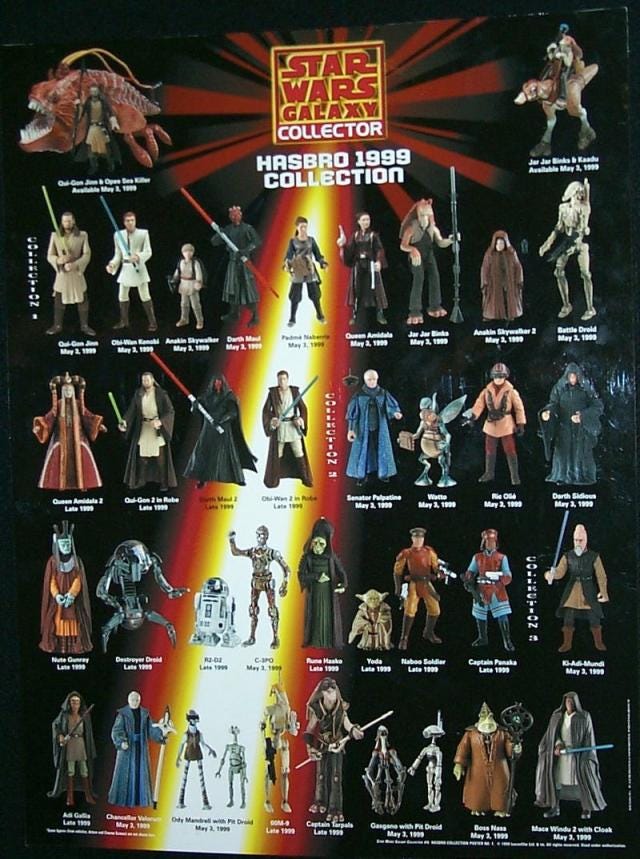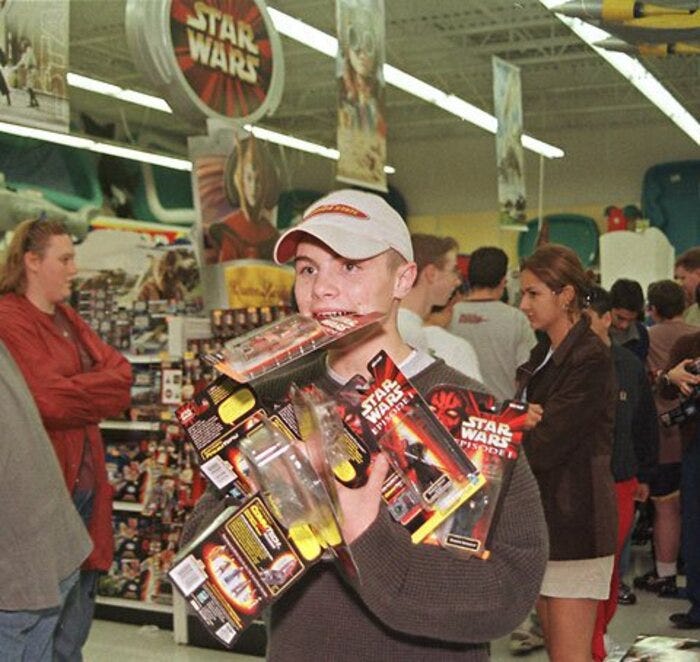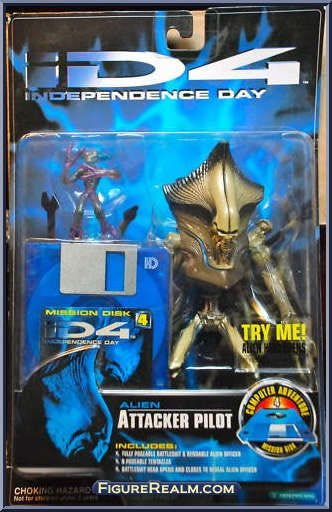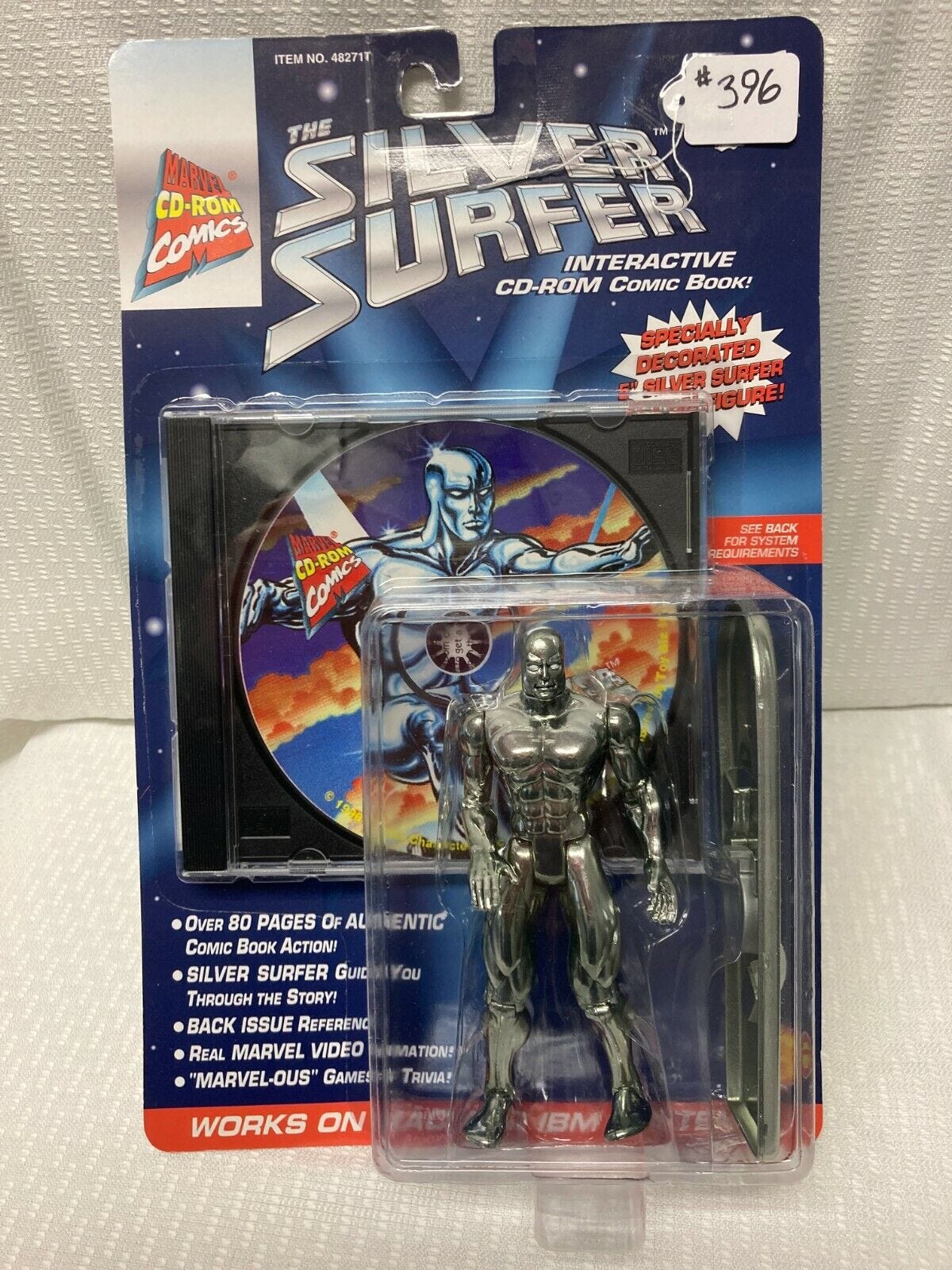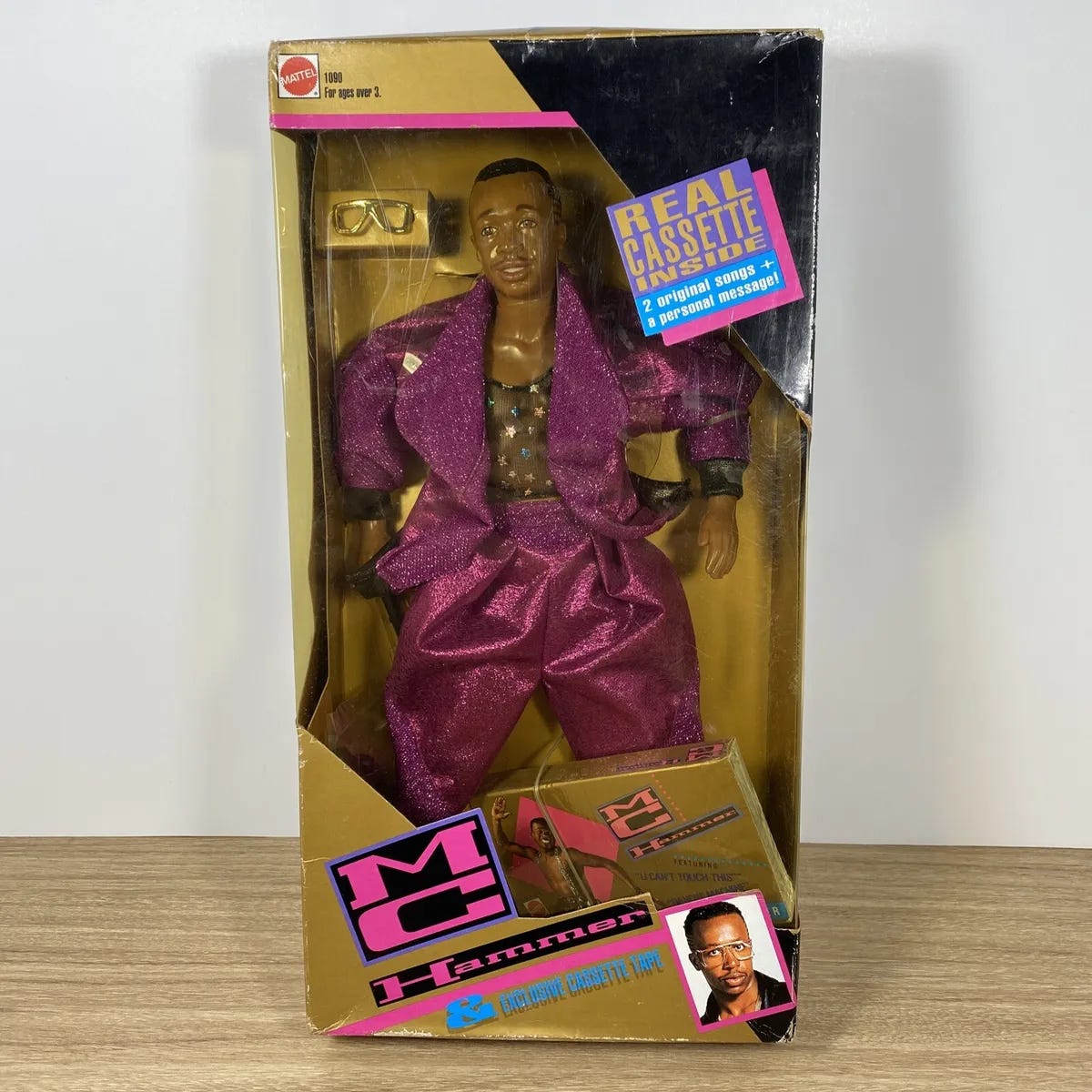It's midnight on May 3, 1999, and toy stores are overrun with shoppers snatching the freshly released figures from the brand-new Star Wars Episode 1: The Phantom Menace. Hasbro really went for it, too: the full line-up of characters, creatures, and vehicles were unleashed that year—including the 38 figures that embodied the classic Star Wars “no-character-too-obscure” approach.
You’re so stoked about your haul (see fig. 1) that you don’t even notice that the figures each come with something called a “COMMTech” chip. Don’t know what it does? Per Entertainment Weekly, Toys “R” Us sold 1.25 million Phantom units that day, and you’d be one in a considerable chunk of those who didn’t use the chips for anything other than their secondary function: an action figure stand.
But if you bought a sold-separately COMMTech chip reader, you’d discover that those chips contain an array of dialogue and sound effects from the film. Here’s a less-than-enthusiastic retrospective video that samples those sounds:
Hasbro had actually been playing with this idea for a bit before 1999. The company worked with the U.K.’s Innovision Research & Technology to develop them. Prototype Archives has a page dedicated to these things, and they are much more bullish on these. Their breakdown of how they work: “CommTech uses a technology known as Radio Frequency Identification (RFID). This technology utilizes radio waves to accomplish this. At a simple level, RFID systems consist of three components: an RFID tag, RFID reader and an antenna. RFID tags contain an integrated circuit and an antenna, which are used to transmit data to the RFID reader. The reader broadcasts signal through the antenna. The RFID tag receives the signal. It is charged with enough energy to send back an identifying response. The reader collects the data sends to a computer to process and convert the data into an electronic sound.” Not sure it’s clicking for me from that explanation, but I believe you all! Notably, the reader was designed to look like Qui-Gon Jinn’s comms device in the film, which was a bonus for early cosplayers.
It was a neat add-on for these figures, but one thing few people don’t mention when looking back at the Phantom Menace’s massive cultural impact: The line helped kill Kenner, the beloved, Cincinnati-based makers that Hasbro had purchased in the early 1990s and the company that was responsible for the original Star Wars toylines. Simply, Hasbro had over-produced the toys and they actually under-sold after lukewarm reviews. That’s why the figure at the top of the page cost me about $10, only a couple more bucks than its original price.
Still, revisiting the CommTech gimmick has me wistful for a few of the other tech accessories that came with figures in the 1990s:
Independence Day’s supplemental game that was split up into floppy disks that accompanied figures:
Marvel’s figures packed with CD-ROMs in the mid-1990s:
But let’s be honest, M.C. Hammer dolls came with cassette tapes way before all of that:


